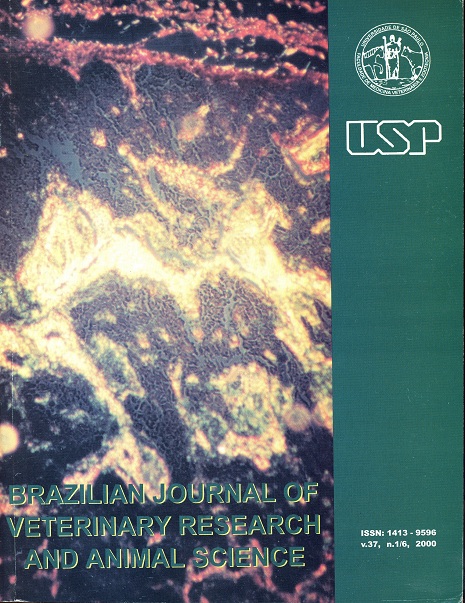Hemogasometric evaluation during the Inflow Occlusion technique in the heart applied by different periods of time in health dogs
DOI:
https://doi.org/10.1590/S1413-95962000000300011Keywords:
Dog, Blood gases and pH analyses, Cardiac surgery, Inflow occlusion, Acid-base imbalanceAbstract
The Inflow Stasis has been used in Veterinary Medicine for a long time and although its not a new technique we do not know much about its effects in the post operative period. Patients that will suffer a cardiac surgery must have their blood gases, pH and bicarbonate monitored since alterations in their ventilation and circulatory system occurs frequently. The aim of this paper is to indicate possible alterations in ventilation, oxygenation and acid-basic balance caused by the Inflow Stasis in dogs, when submitted to different times of circulatory interruption. Fifteen health, adult dogs (Canis familiaris) were equally divided in three groups (A, B and C) and submitted to different periods of blood inflow occlusion in the heart (5, 10, and 15 minutes). During the surgery, samples of arterial blood were taken from the femoral artery (previously catheterized) and immediately analyzed by a pH and blood gases analyzer. Moments of evaluation were: M0- thirty minutes before the induction of anaesthesia; M1- soon afterwards the induction of anaesthesia; M2-two minutes before the circulatory occlusion; M3- two minutes before the end of circulatory occlusion; M4- right after the circulation was restored; M5- at the end of surgery; M6- twenty-four hours after the end of surgery, and M7- fourty-eight hours after the end of surgery. The results were submitted to a statistical analyses and showed that the circulatory interruption caused a high level of hypoxemia and metabolic acidosis that was very slight in group A, moderate in group B, and severe in group C.Downloads
Download data is not yet available.
Downloads
Published
2000-01-01
Issue
Section
VETERINARY MEDICINE
License
The journal content is authorized under the Creative Commons BY-NC-SA license (summary of the license: https://
How to Cite
1.
Kwasnicka KL, Sotopiglia AJ, Freitas RR de, Fantoni DT. Hemogasometric evaluation during the Inflow Occlusion technique in the heart applied by different periods of time in health dogs. Braz. J. Vet. Res. Anim. Sci. [Internet]. 2000 Jan. 1 [cited 2026 Jan. 18];37(3):234-48. Available from: https://revistas.usp.br/bjvras/article/view/5821





